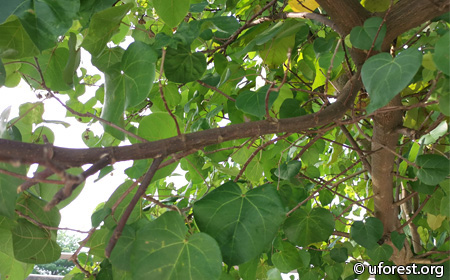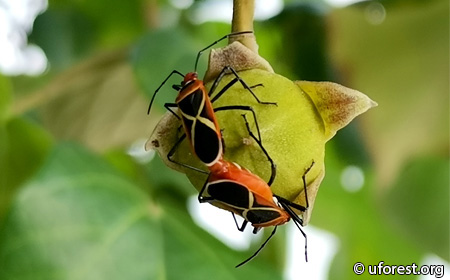Talipariti tiliaceum (L.) Fryxell
| Etymology | Genus | - |
|---|---|---|
| Species | Linden-like, referring to the leaves, compared to the Linden (Tilia) genus | |
| Family | Malvaceae | |
| Synonyms | Hibiscus tiliaceus L. | |
| Common Names | Sea Hibiscus | |
| Status | Native: Common | |
| Form | Tree | |
| Native Distribution | Suspected Pantropical | |
Diagnostics:
Talipariti tiliaceum is a very common shrub that is found along coasts and edge of mangroves. There is only one other species of shrub in the same habitat that bears close similarity to it, i.e., the Portia Tree. The Talipariti tiliaceum have broader and rounder leaf blades, and fainter leaf venations. In addition, the flowers of Talipariti tiliaceum has a red centre, compared to the entirely yellow flower of the latter.
Interesting Facts:
At underside of the Sea Hibiscus's leaves, slits are apparent on the main veins near the petiole. These are glands that secret nectar for ants, which in return provide protection to the plant from herbiviores. A common species of Cotton Stainer Bug (Dysdercus decussatus) is also often found feeding on the fruits of the tree.
From Wim et al. (2006), the roots are used to treat fever; the fibre of the bark is used to make ropes and caulking of boats; leaves are used as fodder; and the timber is used to make the inner parts of boats.

A tree in Punggol Beach, 2017.

Leaf.

Branch.

Nectary slits at leaf underside.

Flower.

Split fruits.

Cotton Stainer Bugs.
References
Wim G and Stephan W, Max Z & Liesbeth S (2006) Mangrove Guidebook for Southeast Asia. RAP publication 2006/07 Food and Agriculture Organization of the United Nations Regional Office for Asia and the Pacific Bangkok.
Author: Siyang
Posted: 2019-12-03 / Modified: 2025-09-28